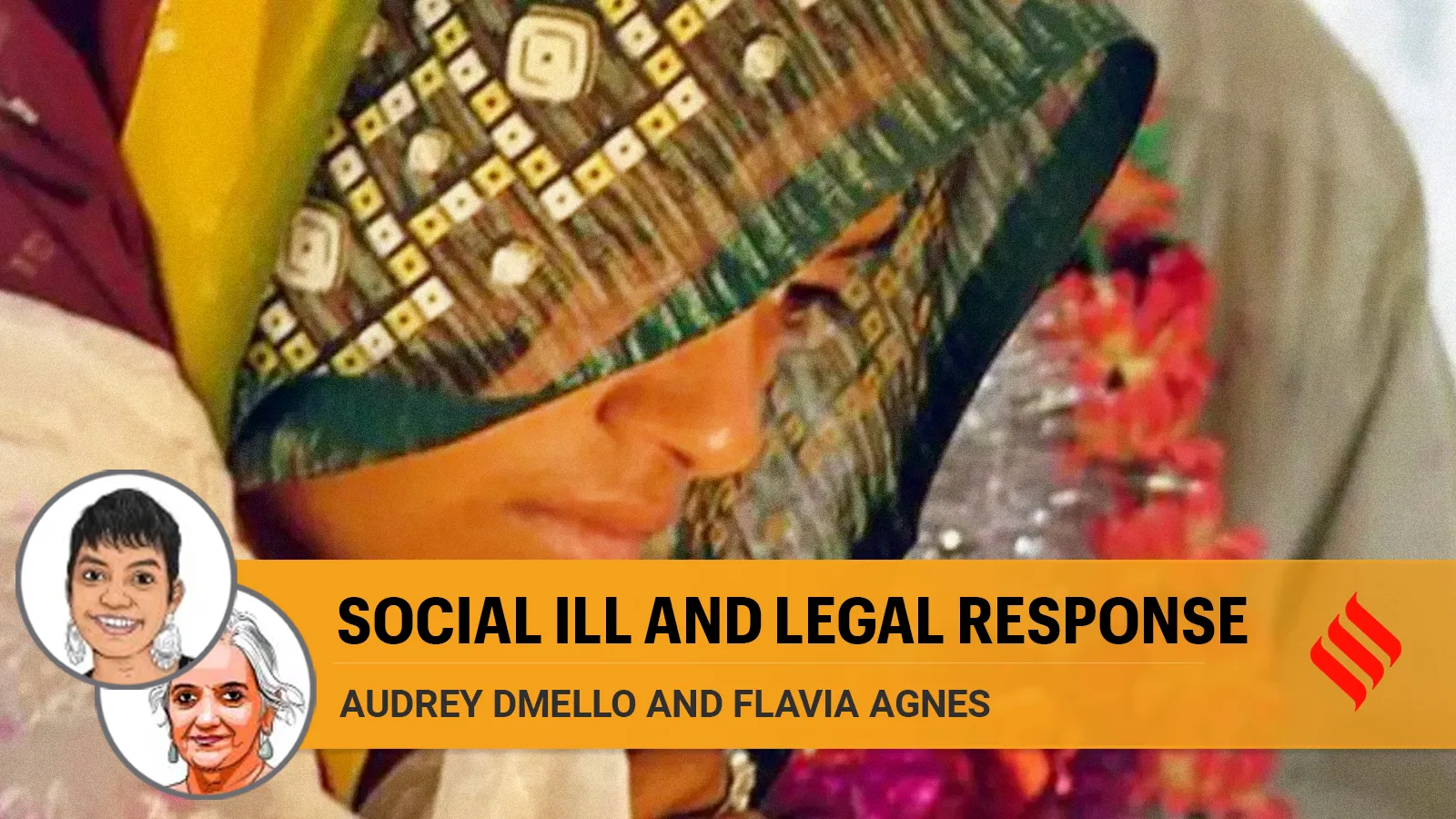On October 18, a Supreme Court Bench comprising Chief Justice D Y Chandrachud and Justices J B Pardiwala and Manoj Misra delivered an extensive judgment highlighting the alarming scale of child marriages in India despite the enactment of the Prohibition of Child Marriage Act (PCMA) 18 years ago. Even though it took the Bench seven years, the verdict has elaborate guidelines for the effective implementation of PCMA.
It starts by quoting Rukhmabai’s plea to the Bombay High Court in 1884, “Sir, I am one of those unfortunate Hindu women, whose hard lot it is to suffer the unnameable miseries entailed by the custom of early marriage. This wicked practice has destroyed the happiness of my life.” Rukhmabai refused to join her husband and declared that she would subject herself to the maximum penalty under the law, rather than live with her husband.
The matter was finally settled between the parties, and Rukhmabai went on to become one of the first practising women doctors in colonial India.
Child marriage is an offence punishable with rigorous imprisonment — which may extend up to two years — or with a fine of up to Rs 1 lakh, or both, on whoever performs, conducts, directs or abets child marriage. Offences under the Act are cognisable and non-bailable. The marriage is voidable except in certain cases. The PCMA of 2006 replaced the Child Marriage Restraint Act of 1929. Before this, we had the Age of Consent Act, of 1891.
Almost 150 years later, India has one in three of the world’s child brides. Of the country’s 223 million child brides, 102 million were married before turning 15. In 2006, child marriages in India made up 47 per cent of all marriages — almost half of all girls in India were married before the age of 18, as per the National Family Health Survey. The prevalence has halved since the enactment of the PCMA. In some states, however, it still exceeds 40 per cent, with the highest rates found in West Bengal, Bihar and Tripura (UNICEF report). The problem is worse in rural India as compared to urban areas, with 56 and 29 per cent prevalence respectively.
Poverty is the dominant cause of child marriages. Families see it as a way to cope with growing economic hardship. Often, younger siblings are married along with the elder ones to save expenses. Displacement breaks down social networks and protection systems, making young girls even more vulnerable.
The strong emphasis on the sexual purity and virginity of brides ensures parents marry their daughters early. The fear that young girls may be sexually abused, or worse still, engage in consensual sexual activity, is daunting. There is also the deep-rooted belief that a daughter’s marriage is a religious obligation that needs to be fulfilled above all else. In these cases, since the family and community are aligned, PCMA is seldom used. Young girls are unable to stand up to family and societal pressure and support systems offered by the state are not holistic or adequate.
Child marriages are not limited to those carried out under parental pressure; they include marriages by minors against parental wishes. “Should both these kinds of marriages be treated alike?” the Delhi High Court had probed in Jitender Kumar Sharma v State (2010). When minors exercise their choice to marry against their parent’s wishes, the tables are turned and PCMA is promptly used against them to declare their marriage void.
Courts have given contradictory opinions in such cases. In Yunus Khan v State of Haryana (2014), a 16-year-old girl got married against her parents’ wishes. Her father filed a case of kidnapping against her husband and a writ before the High Court seeking her custody. The girl stated that she had married out of her own free will, and the courts held the marriage valid and not void.
However, in the case of Amrinder Kaur and Others v State of Punjab (2015), when the family of the 16-year-old girl opposed the marriage as the boy was from a different caste, the Punjab and Haryana High Court held the marriage void on the ground that the girl was a minor and that the man had enticed and kidnapped her. In this case, it was the couple who had approached the court to obtain police protection and the girl informed the court that she had consented to the marriage.
A void marriage is when a child under 18 years has been “taken” or “enticed” away from their lawful guardian and married off. The marriage is treated like it never existed. A voidable marriage on the other hand is valid until the child approaches the court to “nullify the marriage up to two years after attaining majority”.The states of Karnataka (2016) and Haryana (2020), through state-specific amendments, have made all child marriages void ab initio (void from the beginning).
A National Coalition for Advocating Adolescent Concerns study highlighted the disruptive impact this has had and the plight of child brides in Karnataka: “What will be the legal status of the girls, their children, their right to matrimonial property, etc? How will the law tackle abandonment and destitution of girls especially when husbands take advantage of the void status to re-marry?”
While the guidelines set out by the Supreme Court are commendable, one will have to observe their implementation on the ground. The fact that SC is cognisant of the impact that criminalisation has on girls, their families and communities and has emphasised that these guidelines prioritise prevention before protection and protection before penalisation, is a welcome relief.
Dmello is director and Agnesis is founder, Majlis, Views are personal.



